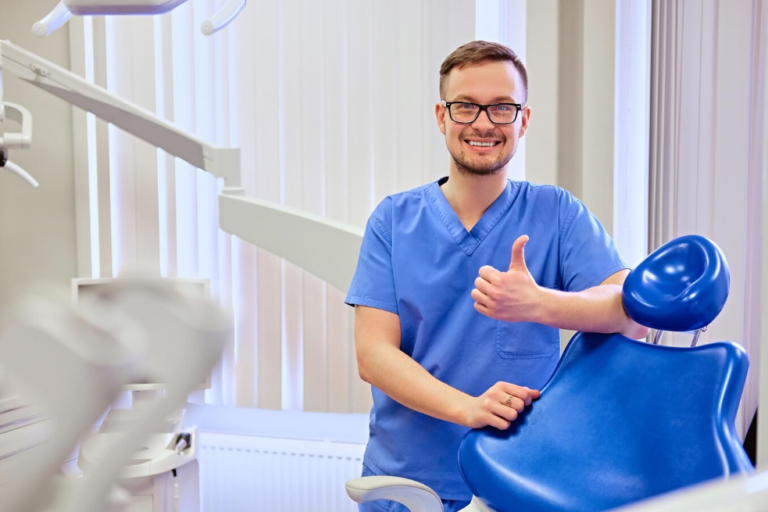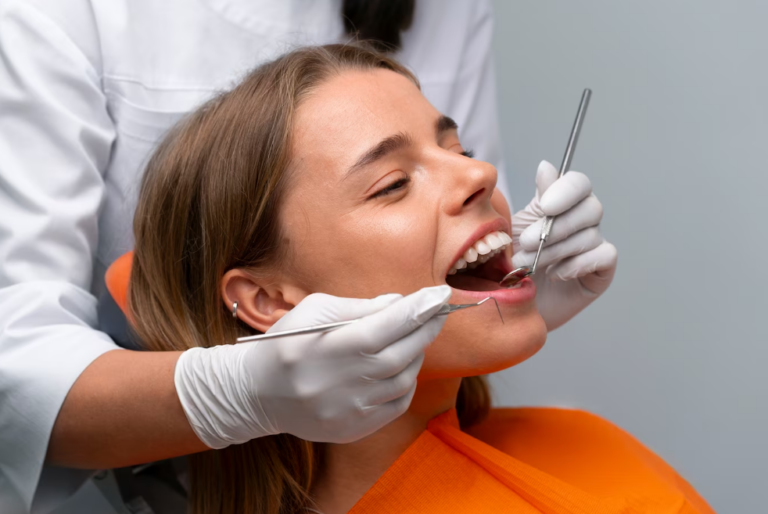Gentle Sedation Dentistry for Kids in Shawnee: A Guide for Parents
Understanding Sedation Dentistry for Kids in Shawnee
It’s normal to feel a little uneasy when you hear the words “sedation dentistry,” especially when it comes to your kids. Sedation dentistry for Kids in Shawnee is a safe and effective way to help children get the dental care they need without fear or anxiety. Let’s break down what it is and why it might be the right choice for your child.
What is Sedation Dentistry?
Sedation dentistry uses medication to help patients relax during dental procedures. It’s not the same as general anesthesia, where a patient is completely unconscious. Instead, it ranges from mild relaxation to deeper sedation, depending on the child’s needs and the procedure being performed. Think of it as a way to take the edge off and make the experience more comfortable for everyone involved.
Benefits of Sedation for Children
There are several reasons why sedation might be recommended for children:
- Reduces Anxiety: It helps kids who are afraid of the dentist to feel calm and relaxed.
- Enables Treatment: It allows dentists to complete necessary procedures on children who might otherwise be unable to sit still or cooperate.
- Minimizes Discomfort: It can make longer or more complex procedures more tolerable.
- Creates Positive Experiences: By reducing fear and discomfort, it can help children develop a more positive attitude toward dental care in the future.
Sedation dentistry isn’t about “drugging” kids. It’s about using safe and carefully monitored techniques to make dental visits less traumatic and more productive. The goal is always to provide the best possible care while prioritizing the child’s well-being.
Ensuring Your Child’s Comfort and Safety
When considering sedation dentistry, safety is always the top priority. Here’s what you can expect:
- Thorough Evaluation: The dentist will review your child’s medical history and discuss any concerns you may have.
- Careful Monitoring: During the procedure, your child’s vital signs (heart rate, breathing, etc.) will be closely monitored.
- Trained Professionals: Sedation is administered by dentists or trained professionals with experience in pediatric sedation.
- Clear Communication: The dental team will explain the procedure and answer any questions you have before, during, and after the appointment.
Types of Gentle Sedation Options Available
When it comes to keeping your child comfortable during dental visits in Shawnee, several gentle sedation options are available. Each type offers a different level of relaxation, and the best choice depends on your child’s anxiety level, age, and the complexity of the dental procedure. Let’s explore the common types:
Nitrous Oxide for Mild Anxiety
Nitrous oxide, often called “laughing gas,” is a safe and effective way to ease mild anxiety. It’s mixed with oxygen and inhaled through a small mask placed over the nose. The effects are mild and wear off quickly after the mask is removed. Here’s what you should know:
- It helps children feel calm and relaxed.
- The dentist can easily adjust the level of sedation.
- Its effects disappear within minutes after the procedure.
Oral Sedation for Deeper Relaxation
For children who need a bit more help relaxing, oral sedation might be the answer. This involves giving your child a liquid or pill to swallow before the appointment. It takes a little longer to take effect than nitrous oxide, but it provides a deeper level of relaxation. Here’s what to consider:
- Your child will be awake but very drowsy.
- The effects can last for a few hours.
- Careful monitoring is essential during and after the procedure.
IV Sedation for Comprehensive Procedures
IV sedation is usually reserved for more extensive or complex dental treatments or children with significant anxiety. The sedative is administered directly into a vein, allowing for precise control over the level of sedation. Here’s what to expect:
- Your child will be in a deeply relaxed state.
- The dental team will closely monitor vital signs.
- Recovery may take a bit longer compared to other methods.
Choosing the right sedation method is a collaborative decision between you, your child, and the dentist. Factors like your child’s anxiety level, medical history, and the type of procedure all play a role in determining the best approach. Don’t hesitate to ask questions and express any concerns you might have.
When is Sedation Dentistry Recommended?
Sedation dentistry can be a real game-changer for some kids. It’s not always the first choice, but there are situations where it makes a huge difference in getting children the dental care they need. Let’s look at when sedation dentistry might be the right call.
Managing Dental Anxiety in Children
For some kids, just the thought of going to the dentist is enough to send them into a panic. It’s more than just being a little nervous; it’s a real, genuine fear that can make even a simple check-up impossible. Sedation can help these kids by:
- Reducing anxiety and fear, making the experience less traumatic.
- This allows the dentist to work more efficiently, since the child is calmer and more cooperative.
- Creating a more positive association with dental visits can help reduce anxiety in the future.
For Extensive or Complex Treatments
Sometimes, kids need more than just a quick cleaning. They might need fillings, extractions, or other procedures that take a while. Sedation can be helpful in these situations because:
- It allows the dentist to complete more work in a single visit, reducing the number of appointments needed.
- It helps the child stay still and comfortable for longer periods, which is important for complex procedures.
- It minimizes discomfort and pain during the treatment.
Children with Special Healthcare Needs
Kids with certain medical, developmental, or behavioral conditions might have a hard time cooperating during dental treatments. Sedation can be a safe and effective way to provide dental care for these children by:
- Reducing sensory overload and anxiety.
- Allowing the dentist to perform necessary treatments without causing undue stress or trauma.
- Improving the child’s overall oral health and well-being.
Sedation isn’t a one-size-fits-all solution, but it can be a valuable tool for ensuring that all children, regardless of their anxiety level or special needs, can receive the dental care they need in a safe and comfortable environment. It’s all about making the experience as positive as possible for everyone involved.
Preparing Your Child for Sedation
So, your kiddo needs sedation dentistry? It’s normal to feel a little anxious about it. But getting prepared can make a huge difference in how smoothly things go, both for you and your child. This section will walk you through what you need to do before, during, and after the procedure to make sure everyone is as comfortable and safe as possible. It’s all about knowing what to expect and taking the right steps.
Pre-Appointment Instructions for Parents
Okay, so before the actual day, there are a few things you’ll need to keep in mind. These instructions are super important for the safety and effectiveness of the sedation. Make sure you follow them closely!
- Fasting Guidelines: This is usually the big one. Your dentist will give you specific instructions about when your child needs to stop eating and drinking before the appointment. It’s usually something like no solid food after midnight, and clear liquids only up to a certain time. Stick to it! A full stomach can cause complications with sedation.
- Medication Information: Tell your dentist about every medication your child is taking, including over-the-counter medications, vitamins, and herbal supplements. Some medications can interact with sedation drugs.
- Comfort Items: Let your child bring a favorite toy, blanket, or book to the appointment. Having something familiar can help them feel more secure and less anxious.
- Clothing: Dress your child in comfortable, loose-fitting clothes. Avoid anything with tight collars or restrictive waistbands.
- Transportation: Make sure you have a ride home after the procedure. Your child won’t be able to go to school or participate in activities that day, and they’ll need someone to keep an eye on them.
What to Expect During the Procedure
Knowing what’s going to happen can ease your mind (and your child’s!). Here’s a general idea of what to expect on the day of the procedure:
- Arrival and Check-In: You’ll arrive at the dentist’s office and check in. The staff will probably go over some paperwork with you and answer any last-minute questions.
- Sedation Administration: The dentist or a trained member of the team will administer the sedation. Depending on the type of sedation, this might be through a mask (nitrous oxide), a liquid or pill (oral sedation), or an IV.
- Monitoring: Throughout the procedure, your child’s vital signs (heart rate, blood pressure, breathing) will be closely monitored. This is standard practice and helps ensure their safety.
- Dental Work: Once your child is sedated and comfortable, the dentist will perform the necessary dental work.
- Recovery: After the procedure, your child will be moved to a recovery area where they can wake up gradually. You’ll be able to stay with them during this time.
Post-Sedation Care and Recovery
Okay, the procedure is done! But your job isn’t over yet. Here’s what you need to do to help your child recover comfortably:
- Supervision: Keep a close eye on your child for the rest of the day. They might be drowsy, confused, or a little unsteady on their feet. Make sure they don’t engage in any strenuous activities.
- Diet: Start with clear liquids and gradually introduce soft foods as your child feels up to it. Avoid anything hard, chewy, or spicy.
- Medication: If the dentist prescribed any pain medication, follow the instructions carefully. Don’t give your child any other medications without checking with the dentist first.
- Oral Hygiene: Follow the dentist’s instructions for brushing and flossing. Be gentle, especially if your child had any extractions or other procedures that might make their mouth sore.
- Potential Side Effects: Be aware of potential side effects, such as nausea, vomiting, or a mild headache. These are usually temporary and resolve on their own. If you’re concerned about anything, call the dentist’s office.
Preparing your child for sedation dentistry involves clear communication, adherence to pre-operative guidelines, and attentive post-operative care. By understanding each step, parents can help their children have a safe and positive experience, turning a potentially stressful situation into a manageable one.
Choosing the Right Pediatric Dentist in Shawnee
Finding the right pediatric dentist in Shawnee is a big deal. You want someone who’s great with kids and knows their stuff when it comes to little smiles. It’s not just about fixing teeth; it’s about making sure your child has a positive experience and develops good habits for life. Let’s explore what to look for.
The Importance of a Pediatric Specialist
Why go with a pediatric dentist instead of a general dentist? Well, pediatric dentists have extra training, usually two to three years after dental school. This training focuses specifically on kids, from infants to teens, and even those with special needs. They’re better equipped to handle the unique challenges and anxieties that children can have about dental visits. They also know how to create a comfortable and fun environment, which can make all the difference.
Questions to Ask Your Sedation Dentist
When you’re checking out potential dentists, it’s good to have a list of questions ready. Here are a few to get you started:
- What experience do you have with sedation dentistry, specifically with children?
- What are your protocols for monitoring my child during and after the procedure?
- Can you explain the potential risks and benefits of the sedation method you recommend?
- What kind of emergency equipment do you have on hand?
- What are your qualifications and certifications?
It’s important to feel comfortable with the dentist and their team. Don’t hesitate to ask anything that’s on your mind. A good dentist will be happy to answer your questions and put your worries at ease.
Creating a Positive Dental Experience
Making dental visits positive can set your child up for a lifetime of good oral health. Here are some tips:
- Start early: Begin taking your child to the dentist as soon as their first tooth appears.
- Talk positively: Use encouraging words when discussing dental visits.
- Choose a kid-friendly office: Look for a place with bright colors, fun decorations, and friendly staff.
- Be a good role model: Let your child see you taking care of your teeth.
- Reward good behavior: Offer a small, non-food reward after the appointment.
Safety and Monitoring During Sedation
When it comes to your child’s dental care, especially procedures involving sedation, safety is always the top priority. It’s completely normal to feel some anxiety, but knowing the precautions and protocols in place can provide peace of mind. Whether it’s a routine checkup or a more complex treatment like dental restoration for kids, understanding how dental professionals protect your child’s well-being during sedation can help you feel more confident and informed.
Expertise of the Dental Team
It’s not just the dentist who’s involved; it’s a whole team working together. Here’s what to look for:
- Specialized Training: The dental team should have specific training in pediatric sedation. This means they know how to handle kids’ unique needs and responses to medication.
- Experience: Look for a team with a solid track record. The more experience they have, the better equipped they are to handle any situation.
- Certifications: Make sure the team has the necessary certifications in sedation dentistry. This shows they’ve met certain standards of competence and safety.
Advanced Monitoring Equipment
During the sedation procedure, your child will be closely monitored using some pretty cool tech. This equipment helps the team keep a close eye on vital signs, making sure everything is going smoothly. Here are a few things they might use:
- EKG (Electrocardiogram): This monitors your child’s heart rate and rhythm.
- Pulse Oximetry: This measures the oxygen level in your child’s blood.
- Blood Pressure Monitoring: This keeps track of your child’s blood pressure throughout the procedure.
Prioritizing Your Child’s Well-being
Ultimately, the goal is to make sure your child is safe and comfortable. Here’s how dental teams prioritize that:
- Individualized Approach: Every child is different, so the sedation plan should be tailored to their specific needs and medical history.
- Emergency Preparedness: The dental office should have protocols in place for handling any potential emergencies.
- Constant Vigilance: The dental team will be paying close attention to your child throughout the entire procedure, ready to respond to any changes.
Knowing that the dental team is well-trained, uses advanced monitoring equipment, and prioritizes your child’s well-being can make a huge difference in your peace of mind. Don’t hesitate to ask questions and voice any concerns you have. Open communication is key to a positive and safe experience.
Addressing Common Parental Concerns
It’s natural to have questions and worries when it comes to your child’s dental health, especially when sedation dentistry is involved. Let’s tackle some of the most frequent concerns parents have.
Is Sedation Safe for My Child?
This is probably the biggest question on your mind, and it’s a valid one. The short answer is yes, sedation is generally safe when performed by qualified and experienced professionals. However, it’s important to understand the factors that contribute to this safety:
- Proper Evaluation: A thorough medical history review is crucial. The dentist needs to know about any allergies, medications, or pre-existing conditions your child has.
- Trained Professionals: Sedation should only be administered by dentists with specialized training in pediatric sedation techniques.
- Adherence to Guidelines: Dentists must follow strict protocols and guidelines established by dental associations to ensure patient safety.
Understanding Potential Side Effects
Like any medical procedure, sedation can have potential side effects. It’s important to be aware of these, even though they are usually mild and temporary:
- Nausea or Vomiting: This is more common with deeper levels of sedation. The dental team will provide instructions on how to minimize this risk.
- Drowsiness: Your child will likely be sleepy for a few hours after the procedure. Plan for a quiet and restful day.
- Headache: Some children may experience a mild headache after sedation. Over-the-counter pain relievers can usually help.
- Paradoxical Reaction: Rarely, a child may become agitated or hyperactive instead of calm. This is more common with certain medications and is usually short-lived.
It’s important to remember that the dental team is there to monitor your child closely throughout the entire procedure and recovery period. They are trained to recognize and manage any potential complications.
Open Communication with Your Dental Provider
The best way to ease your concerns is to have an open and honest conversation with your child’s dentist. Don’t hesitate to ask questions, express your worries, and seek clarification on anything you don’t understand. Here are some things you might want to discuss:
- The specific type of sedation being used and why it’s recommended for your child.
- The dentist’s experience and training in pediatric sedation.
- The monitoring equipment and procedures used during sedation.
- What to expect during the procedure and recovery period.
- What to do in case of any unexpected side effects or concerns after the procedure.






